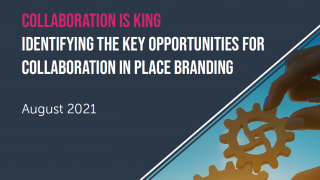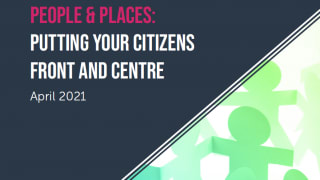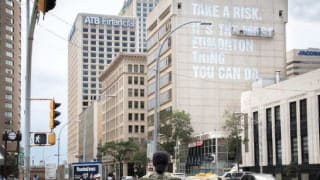Rethinking place branding through the lens of design
When two major disciplinary fields meet, perspectives broaden. Too often, design and placebranding have overlooked each other. Yet, their hybridisation could spur fruitful innovation, reinventing our models and practices to address key challenges faced by places. So why do place branders need designers and, conversely, what can placebranding processes contribute to the world of design?
From product design to design thinking
Already recognised in the corporate world for its capacity to generate added value (McKinsey), design has entered the public realm. No longer reduced to its “product” dimension that seeks harmony between aesthetics and function - object, furniture, building, graphic design - it has found new applications in the market and non-market economy of service. The public sector now integrates it to rethink, reshape, re-enchant the numerous daily services provided to citizens: in administration,transport, healthcare or cultural sectors. In the knowledge economy, design has evolved more toward a process, a mindset, a problem-solving approach, evidenced by the advent of design-thinking. Design has intervened in the ways of thinking and doing of local authorities. It is now turning into a preferred instrument for developing the overall place experience.

Designin an evolving discipline, with numerous new sub-fields emerging (scheme byDavid Aboulkheir)
Design and place branding are human-centric and transversal
By definition, both disciplines are highly cross-disciplinary and participative. An array of relevant stakeholders must be engaged in the whole process to succeed. Moreover, both are focused on the end-user. Observing and understanding humans’ needs, behaviours, emotions, desires, is a crucial step towards adapting the right offer of products, services, experiences. Designers often start by immersing themselves on the ground,to literally put themselves in the shoes of the user to identify main blockages. The design method usually includes a creative collective work of imagination, to come up with solution-scenarios to a problem, then a prototype and a test phase. The latter allows us to evaluate the project feasibility, readjust it and consider its spreading. Often applied to small scale projects (organisations, public spaces, streets, neighborhoods), in theory design has no limit of scale for operating.
Design as a place brand attribute
Increasingly, place branders and marketers value design as a strategic asset. They consider it as an area of specialisation, a unique know-how, and a true attribute for a distinct brand image. Many initiatives encourage cities to seize design for promoting themselves and catalysing their urban developments such as the UNESCO Creative Cities Network which gathers more than 30 cities with a design label, the World Design Weeks that connect design festivals worldwide, or the World Design Capital which every two years awards a city’s innovative use of design to strengthen economic, social, cultural and environmental development.
Lille Metropolis, Northern France, will be World Design Capital in 2020, following cities like Mexico City, Seoul or Helsinki. The city beat Sydney in the final, emphasising what it was planning to do rather than what it already had achieved. The city plans to deploy a “Proof of Concept” approach to embody design within concrete projects within the region. POC projects will address crucial urban issues such as housing, mobility, art, ecology, livability etc. A dedicated organisation called the Republic of Design was set up to support initiatives, connecting designers, the civil society and the public sector. During the event and beyond, Lille will be challenged with delivering a new brand promise and leveraging the benefits of it: enhanced reputation, massive inflow of visitors and income, acceleration of its development.
Cities like Helsinki embedded design early in their DNA. Building on its design heritage, the city pioneered the hiring of a chief design officer and the integration of design competencies in municipal services. Other cities across Europe started later, such as Eindhoven (Holland), Saint-Etienne (France) or Kortrijk (Belgium). These mid-sized post-industrial cities have embraced design remarkably well as an overarching strategy, reflected in the making of place (public space regeneration, iconic architecture), the local economy (design industry,collaborative third-places), education (School of Design), dedicated events(biennials, festivals), local governance (top-down and bottom-up, public and private) as well as offensive communication.
 |  |
Samples of communication materials created for Lille WDC 2020 | |

Design is one of Eindhoven’s brand pillars (screen capture, 23/01/2018)
  |  Design Weeks website(screen capture, 23/01/2018) |
The Design District Helsinki website references and maps design related activities across the city (screen capture, 23/01/2018 |
Design, a driver of value creation for place brands
Although design maybe a powerful communication theme, it needs to be approached as a process of place value creation - for design can be a true lever of transformation. Consider the issue of user-paths which, in marketing,refers to the customer journey. This is the set of phases which the consumer-user of a product or service goes through and, by extension, apply to the place-user, whether it bean investor, visitor or local resident. To improve place-user paths, design may help to fluidify movement, orient users, drawing upon their main psychological features. It can lead us to look at key place touch points, whether physical (frequented areas, public equipment, plazas, parks, amenities) or digital (web portals, apps, plans). Some approaches have emerged such as experience design, which introduces creative script writing methods tore-enchant place experiences, sometimes in a quirky way to positively surprise and provide memorable moments. To reach its full potential, design may need to be imbued with sense of place. It may need to resonate with what the place stands for, its core values and meanings. This is where place branding can provide the essential strategic framework to guide design actions.

Place-making projects often rely on design approaches to reshape public space, here in NY Times Square. Gehl Agency, Credit : DOT
Renewing placebranding through design
In a word, design can inject innovation and creativity to place branding processes – enabling risk-taking, or providing the right to make mistakes and experiment. Place branding programmes often fail to deliver because they turn out to be too complex, or too cumbersome to implement, or not collaborative enough. They may lack the creativity and agility needed to move from strategy to actionable ideas. Conciliating good design with place branding might be the key for heading towards more attractive, liveable and fulfilling places.






